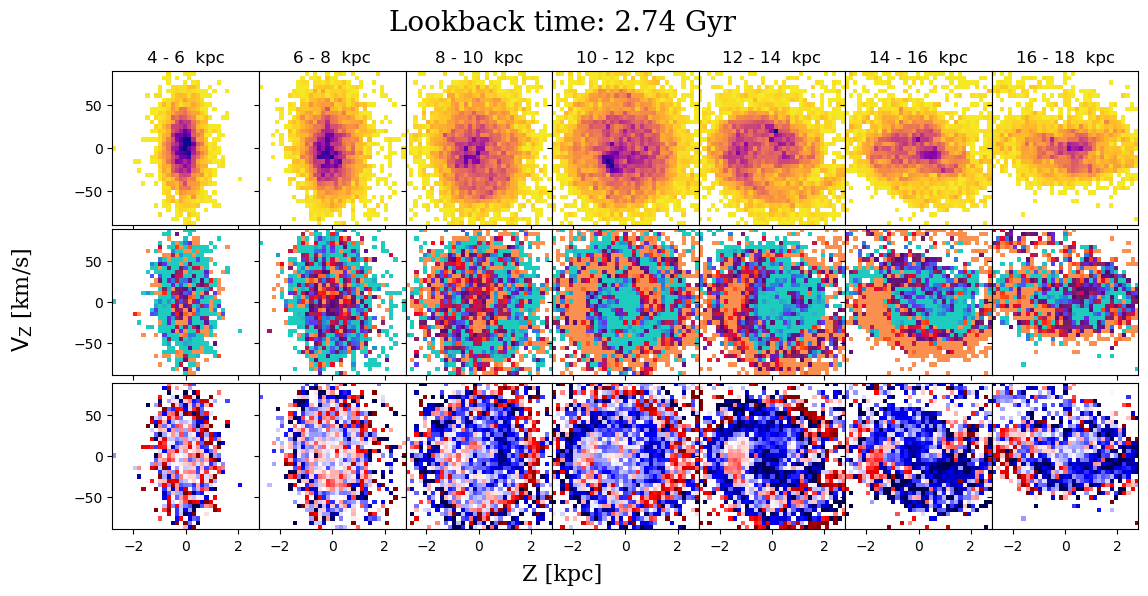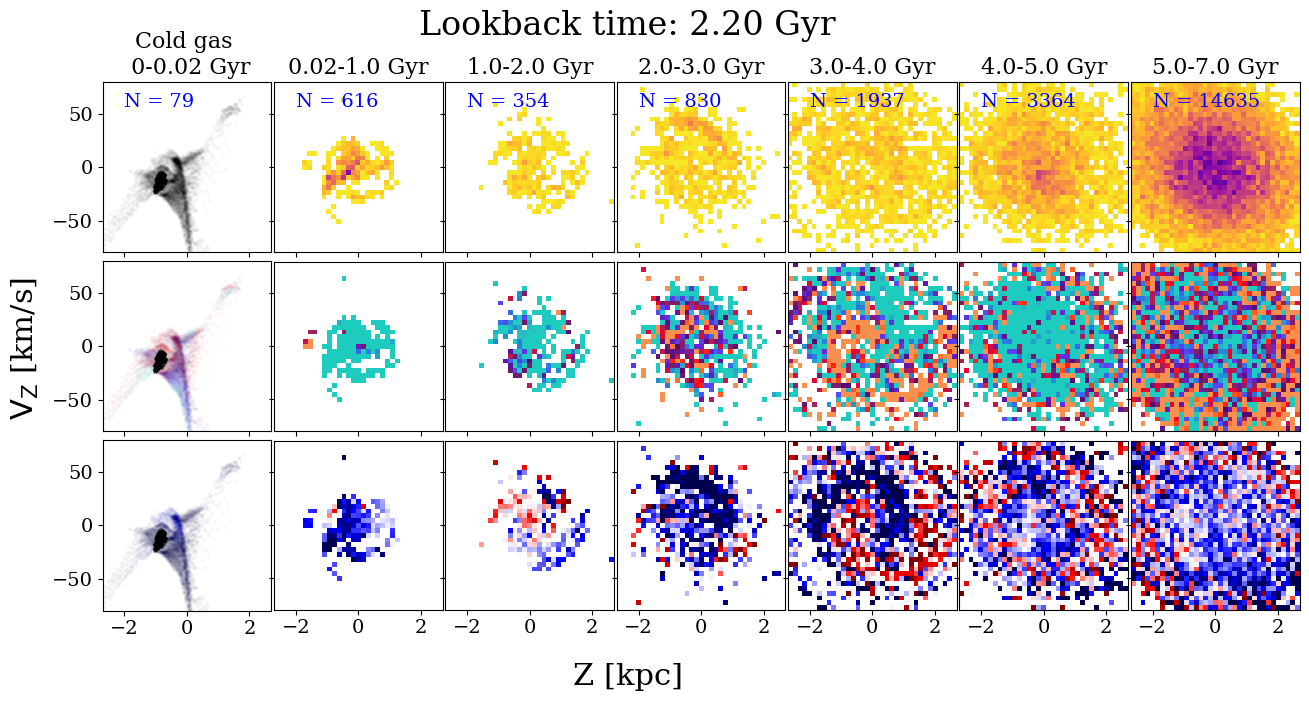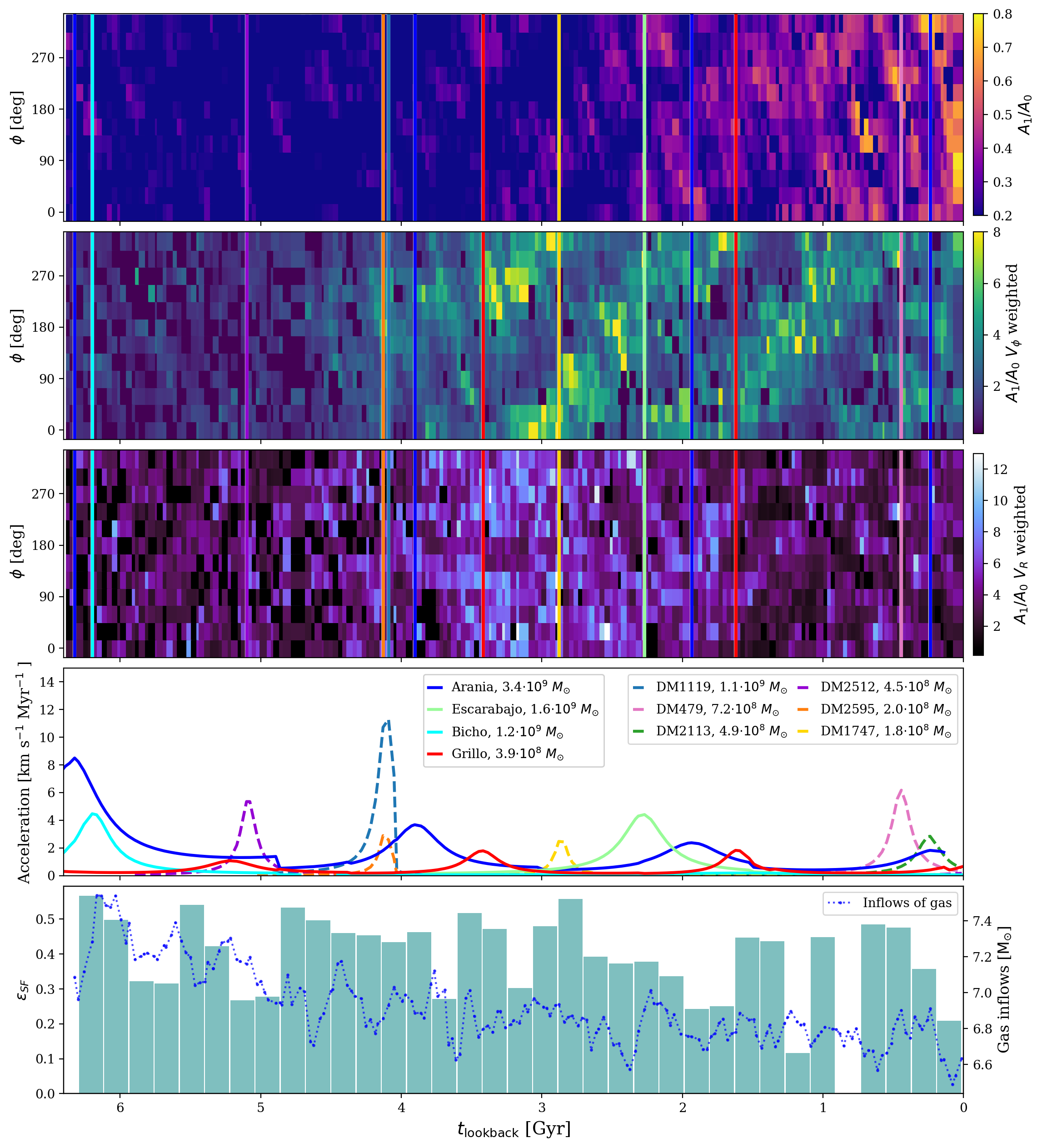• Gaia Data Release 2 (2018): the Milky Way's disk is perturbed, and presents phase spirals in the Z - 𝑉Z plane (Antoja et al. 2018) of the solar neighborhood.
• The phase spirals are present in the Z - 𝑉Z plane of a local region of the galactic disk and are the consequence of a phase mixing process triggered by external or internal perturbation which causes vertical and radial oscillations.
• Spiral shape that winds up over time: Also can be seen when coloured by 𝑉ϕ and 𝑉𝑅.
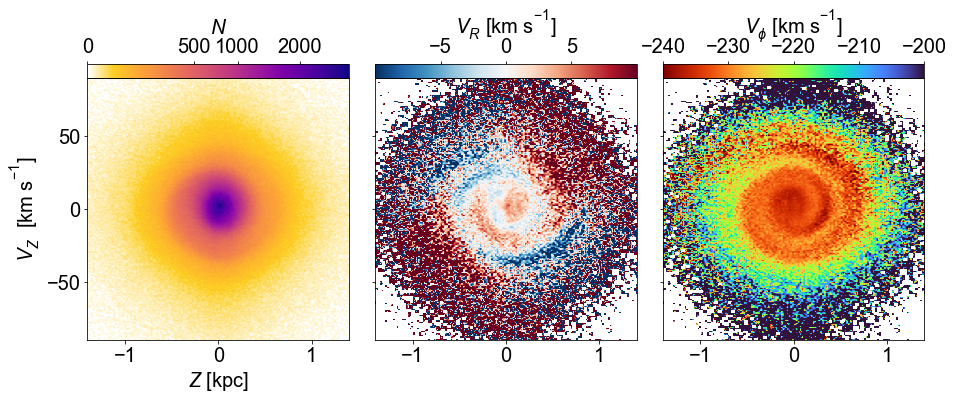
Figure 1: Local phase spiral as seen by Gaia DR3. Two-dimensional histogram of the vertical projection of phase space (Z–VZ) Middle: Same projection but color-coded by median radial velocity VR. Right: Same projection but color-coded by median azimuthal velocity Vφ.
An interacting satellite can induce an energy kick and trigger phase mixing event.
This spiral pattern is compatible with the last pericenter of the Sagittarius Dwarf Galaxy estimated at 500 Myr ago.
Since Gaia DR2, the phase spirals as consequence of Sagittarius have been studied in isolated models (N-body).
The GARROTXA Simulation
We use a MW-size GARROTXA model (a hydrodynamical zoom-in cosmological simulation).
• Spatial resolution of 100 pc.
• Minimum mass of 103 𝑀⨀ for star particles and 105 𝑀⨀ for dark matter particles.
• Minimum timestep 103 years.
• Mass assembling history similar to Milky Way.
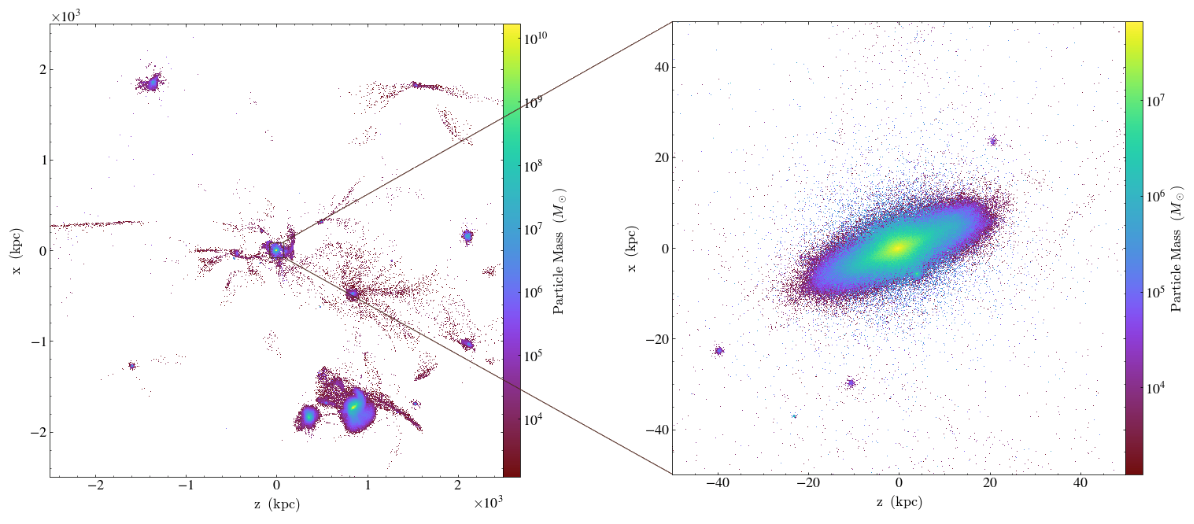
Figure 2: GARROTXA's MW sized model G.322.
Stellar particles with ages between 0 and 5 Gyr.
Galactocentric radii from 10 to 12 kpc and vertical position |𝑍 | < 2.5 kpc.
12 adjacent sectors spanning 30 deg in 𝜙
Temporal evolution from lookback time of 6 to 0 Gyr.
Satellites
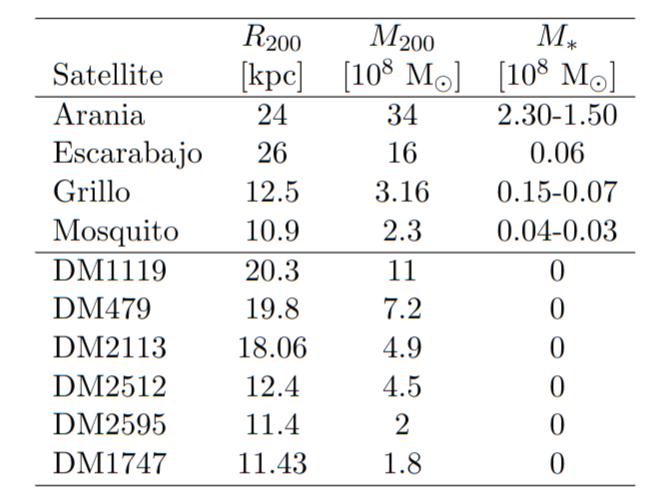
Table1: Properties of the largest satellite galaxies and dark satellites in the simulation as computed by Rockstar halo finder. From left to the right: R200 , M200 and stellar mass contained in 20% of the R200 .
We use Rockstar halo finder to identify all sub-halos that may impact the disk’s kinematics.
In Table 1 we summarize the characteristics of those which are more massive and reach lower distance to the main galaxy over the timespan studied.



